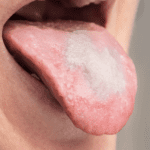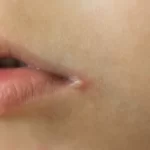Dentinogenesis Imperfecta (DI) is a hereditary dental disorder that affects the formation of dentin, one of the primary components of teeth. It is a rare condition with significant implications for both dental health and overall quality of life. This comprehensive article aims to shed light on the causes, clinical features, diagnosis, and management of Dentinogenesis Imperfecta.
What is Dentinogenesis Imperfecta?
Dentinogenesis Imperfecta is a genetic disorder that impacts the development of dentin, the hard tissue underlying the enamel of teeth. It belongs to a broader group of hereditary conditions called “amelogenesis imperfecta” that affect enamel formation. However, DI specifically focuses on abnormalities in dentin. The condition results in weak, discolored, and malformed teeth, making them more susceptible to damage and decay.
Types of Dentinogenesis Imperfecta
There are three primary types of Dentinogenesis Imperfecta, each exhibiting different clinical features and inheritance patterns:
Type I
Also known as Shields’ type, this is the most common and severe form of DI. It is inherited in an autosomal dominant pattern, meaning that only one copy of the mutated gene from either parent is sufficient to manifest the condition.
Type II
This type is associated with osteogenesis imperfecta, a bone disorder. Dentinogenesis Imperfecta Type II is inherited in an autosomal dominant pattern and is less severe than Type I.
Type III
Dentinogenesis Imperfecta Type III is characterized by the presence of short roots and a more variable expressivity. The mode of inheritance can be either autosomal dominant or autosomal recessive.
Causes of Dentinogenesis Imperfecta
DI is primarily caused by mutations in specific genes that play a crucial role in dentin formation. The most common gene associated with Dentinogenesis Imperfecta is DSPP (Dentin Sialophosphoprotein), which encodes for a protein essential for dentin production. Mutations in this gene lead to an abnormal dentin matrix, resulting in weakened teeth with a characteristic translucent appearance.
Clinical Features
The clinical manifestations of Dentinogenesis Imperfecta are evident in the appearance and structure of the affected teeth. The common features include:
- Discoloration
- Tooth Structure
- Tooth Sensitivity
- Brittle Teeth
- Altered Tooth Shape
Discoloration
Teeth affected by DI often appear translucent, blue-gray, or amber in color due to the abnormal dentin matrix.
Tooth Structure
The teeth may have a bulbous, opalescent appearance, and the enamel may be easily worn off, exposing the soft dentin underneath.
Tooth Sensitivity
The abnormal dentin and lack of proper enamel protection make the teeth highly sensitive to temperature changes and certain foods.
Brittle Teeth
The teeth are weak and prone to fractures, chipping, and wear, leading to a shortened lifespan of the dentition.
Altered Tooth Shape
DI may cause abnormal tooth shapes, including small, peg-shaped teeth, and misshapen crowns.
Diagnosis
Diagnosing Dentinogenesis Imperfecta involves a thorough examination of the teeth, family history, and radiographic studies. The dentist will assess the color, shape, and structure of the teeth to identify any characteristic features of DI. X-rays or dental CT scans can provide further insight into the internal structure of the teeth, revealing any anomalies in the dentin and roots.
Management and Treatment
Managing Dentinogenesis Imperfecta requires a multidisciplinary approach involving dentists, orthodontists, and prosthodontists. The primary goals of management include:
- Symptomatic Treatment
- Preventive Care
- Crowns and Restorations
- Orthodontic Treatment
- Dental Implants
- Psychological Support
Symptomatic Treatment
Dentists may address immediate concerns such as tooth sensitivity and pain by recommending desensitizing agents and pain relief medications.
Preventive Care
Maintaining good oral hygiene and scheduling regular dental check-ups are vital to prevent dental decay and detect any issues early on.
Crowns and Restorations
Full coverage crowns are often recommended to protect and strengthen weakened teeth. These crowns can improve aesthetics and function while preventing further damage.
Orthodontic Treatment
Braces or other orthodontic appliances may be necessary to address misalignment issues and improve the bite.
Dental Implants
In severe cases where teeth are extensively damaged, dental implants may be considered as a permanent replacement option.
Psychological Support
Individuals with DI may experience self-esteem and confidence issues due to the appearance of their teeth. Psychological support and counseling can help in coping with these challenges.
Dental Care for Individuals with Dentinogenesis Imperfecta
Individuals with DI should follow specific dental care practices to maintain oral health:
- Use a soft-bristled toothbrush and fluoride toothpaste to clean teeth gently.
- Avoid excessive force while brushing and flossing to prevent enamel erosion.
- Limit the consumption of acidic and sugary foods to reduce the risk of decay.
- Wear a mouthguard during physical activities to protect the teeth from trauma.
- Visit the dentist regularly for check-ups and professional cleanings.
Research and Future Prospects
Researchers continue to explore the genetic basis of Dentinogenesis Imperfecta and seek potential gene therapies or novel treatment options. Additionally, advancements in dental materials and technology may further enhance the quality of restorative procedures for affected individuals.
Conclusion
Dentinogenesis Imperfecta is a rare genetic disorder that significantly impacts dental health and overall well-being. Understanding the causes, clinical features, diagnosis, and management of DI is crucial for providing appropriate care and support to individuals affected by this condition. Through early diagnosis, preventive dental care, and a multidisciplinary approach, individuals with Dentinogenesis Imperfecta can achieve better oral health and lead fulfilling lives. Continued research and advancements in dental science hold promise for improving the quality of life for those affected by this condition in the future.





